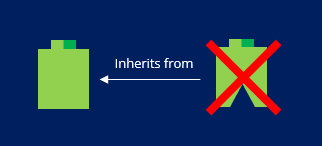
Ways of modifying Pega rules
Pega's low-code platform works on object-oriented principles. Rules can inherit behavior and extend or override behavior. However, when modifying any rule in Pega, it should always be done in a way that preserves its updatability.
The safest way to ensure that a rule remains updatable is to configure the rule within the configuration parameters defined by the author, or to extend the rule according to the extension points defined by the author.
There are three ways to modify a Pega rule:
- Customization
- Extension
- Configuration
Customizing a Pega rule
Customizing means directly modifying one or more Pega rules, rather than extending or configuring them.
Caution: Customizing always makes a rule un-updatable.
Extending a Pega rule
Extending a rule means overriding a rule in an inherited class (for example, by adding fields, changing the UI, and so on).
Extension points must be explicitly defined by the author for updates to be supported.
Caution: By default, extending a rule makes it un-updatable.
Configuring a Pega rule
Configuring a rule means using the rule's pre-defined configuration settings to configure its behavior.
Configuration is always governed and defined by the author.
Tip: Configuring a rule does not override the existing rule and does not impact its updatability.
Check your knowledge with the following interaction:
This Topic is available in the following Module:
If you are having problems with your training, please review the Pega Academy Support FAQs.
Want to help us improve this content?


